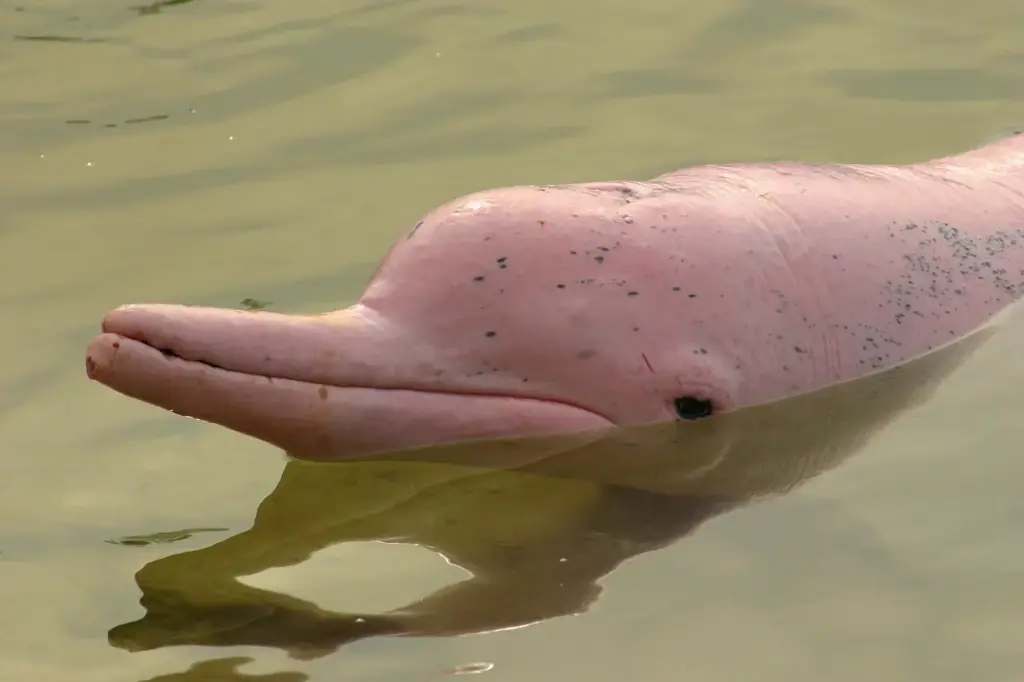That’s a popular question among readers of this website–and an extremely understandable one considering the fact that so many species around the world, particularly rainforest species such as the pink dolphin (Inia geoffresnsis) of South America’s Amazon River system, are in deep trouble. However in this case, we can offer a rare bit of tentative good news to anyone who wonders whether pink dolphins are endangered. It appears that they aren’t, or probably aren’t–not yet, at least.
[ez-toc]

The pink river dolphin, or “boto,” as it is called by people in the Amazon, is one of four freshwater dolphin species in the world. According to the The IUCN (International Union for Conservation of Nature and Resources) Red List of Endangered Species, the three subspecies of Amazon pink river dolphin “appear[s] widespread and relatively abundant” throughout its range, which includes most of the many tens of thousands of miles of the Amazon and Orinoco Rivers and their tributaries. The countries it inhabits include Brazil, Peru, Bolivia, Ecuador, Colombia, Venezuela and French Guiana.
However, the IUCN warns that the boto has not been studied sufficiently for conservationists to understand all of the challenges the creature faces, or to know whether its population is decreasing or remaining stable. Threats faced by the pink Amazon dolphin include loss of habitat due to river damming, drowning due to accidental entanglements in fishing gear and intentional killing by fishermen who either want to eliminate botos as competition for fish or to use them as fish bait. In addition, they are threatened by poisoning from mercury, which is used extensively in gold-mining operations throughout the Amazon region.

So, while the boto currently seems more abundant, and more fortunate, than many other rainforest animals, it is likely that in the not-too-distant future the question, “are pink dolphins endangered?” will be a much more urgent one than it currently is.
If you’d like to see a terrific short video on pink dolphins by Jean-Michel Cousteau, click here. —Paul Guernsey



